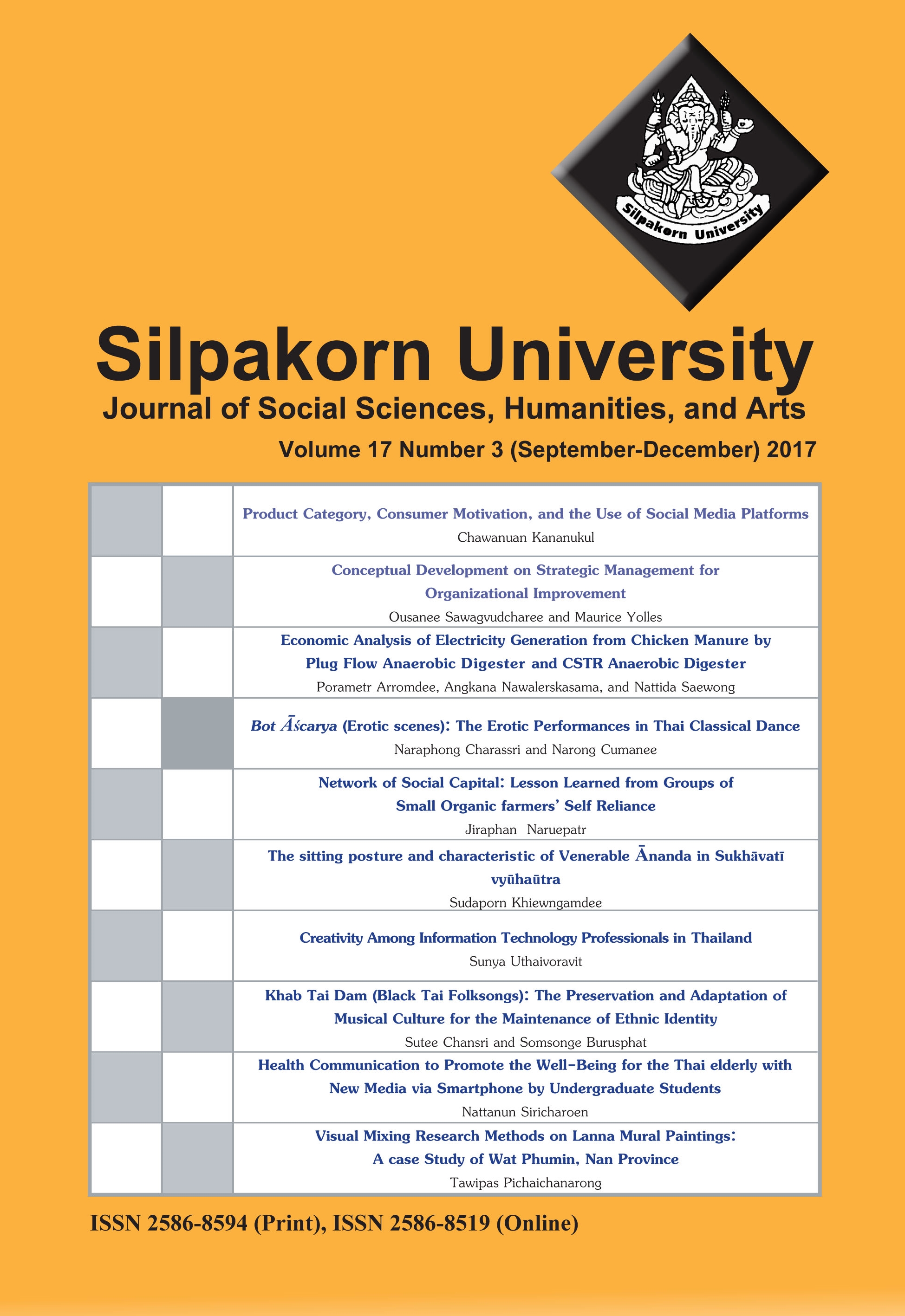The Sitting Posture and Characteristic of Venerable Ānanda in Sukhāvatī vyūha Sūtra
Main Article Content
Abstract
Venerable Ānanda was well known as one of the Buddha’s principal disciples. He was regarded as an excellent listener and the Śakyamuni Buddha’s brother. In Sukhāvatī vyūha Sūtra, one of Mahāyāna Sūtras in the famous school of Pure Land, it narrated about the Pure Land of Amitābha with Ānanda in the role of a hearer of the story of the Sukhāvatī realm from Śakyamuni Buddha. Perhaps, most readers are interested in the teaching of the scriptures. However, the author has some suspicions about some characters that appeared in the Sūtra. Other than the role of Ānanda who asked the Buddha to tell the story of the Pure Land, another interesting role is the sitting posture and characteristics of Ānanda at the beginning of this story, and in other Sūtras. There is some doubts that the author has observed about his personnal character. Thus, the purpose of this article is to study the posture of Ānanda while approaching the Buddha as it appeared in this Sūtra when compared with other Sūtras.
The result of this study reveals that in the Sukhāvatī vyūha Sūtra, the role in the beginning of Ānanda or other great disciples as an interlocutor of the dharma with the Buddha in other Mahāyāna Sūtras, were narrated with similar styles of writing influence by other older texts, as well as by the traditional decorum in approaching the Buddha, which comprised three steps: 1. uncovering uttarāsaṅga from the right shoulder, 2. placing the right knee on the ground, and 3. joining the palms together with respect. The sitting postures of the disciples are particularly interesting because the Mahāyāna sect is likely to create stranger postures than primitive Buddhism. In a comparative study of a traditional decorum for approaching the Buddha of the Theravāda sect, the Tripiṭaka described only two steps by omitting the sitting postures. However, something is doubtful, when the junior Bhikṣus approached the senior Bhikṣus, it described the sitting postures in three steps: 1. uncovering uttarāsaṅga from the right shoulder, 2. squatting on the ground, 3. joining the palms together with respect.
Downloads
Article Details
All rights reserved. Apart from citations for the purposes of research, private study, or criticism and review,no part of this publication may be reproduced, stored or transmitted in any other form without prior written permission by the publisher.
References
Dhyana Master Hsuan Hua. (1974) The Diamond sutra. San Francisco: The Sino-American Buddhist Association.
History Speaks. (2007) Sitting postures. Retrievers on July 10, 2014, fromhttps://indiahistoryspeaks.blogspot.com/2007_11_20_archive.html
Jodoshinshu, West Hongan-ji.(2014) The Sutra Story 10 | The Buddha Speaks of the Infinite Life Sutra. Retrieced on November 10, 2014, from www.youtube.com/watch?v=nifpN4EAj0Y
Mahamakuta-Raja-Vidyalaya. (1982) Syamaratthassa Tipitaka, Vol.2. Bangkok : Mahamakuta-Raja-Vidyalaya Press.
Mahamakuta-Raja-Vidyalaya. (1982) Syamaratthassa Tipitaka, Vol.4. Bangkok: Mahamakuta-Raja-Vidyalaya Press.
Mahamakuta-Raja-Vidyalaya. (1982) Syamaratthassa Tipitaka, Vol.7. Bangkok: Mahamakuta-Raja-Vidyalaya Press.
Mahamakuta-Raja-Vidyalaya. (1982) Syamaratthassa Tipitaka, Vol.17. Bangkok:Mahamakuta-Raja-Vidyalaya Press.
Muller, F. M. & Nanjio, B. (1972) SUKHĀVATĪ – VYŪHA Description of SUKHĀVATĪ, The Land of Bliss. Aryan Series, Vol. I – Part II. Amsterdam Oriental Press.
Pitt chin hui. (2001) Sutra of the Original Vows and Attainment of Merits of Ksitigarbha Bodhisattva. North Hills, CA: International Buddhist Monastic Institute.
Sujivobhikshu. (1979) Mahāyāna Sūtra, Prajñā Pāramita Hridaya Sūtra and Sukhāvatī vyūha Sūtra. Bangkok: Mahamakut Educational Council.
Sathien Bodhinanda. (1982) Vajra Prajñāpāramitā Sūtra. Bangkok: Mahamakut Educational Council.
Sathien Bodhinanda. (1978) Vimalakīrti Nirdeśa Sūtra. Bangkok: Mahamakut Educational Council.
Thanh, Minh.(2001) Sutra of the Medicine. Taipei: The Corporate Body of the Buddha Educational Foundation.
University of the West. (2009) Digital Sanskrit Buddhist Canon. Retrievedon April 2, 2014, from https://dsbc.uwest.edu/
Wikipedia. (2012) Ananda. Retrieved on July, 2014, from https://en.wikipedia.org /wiki/Ananda


